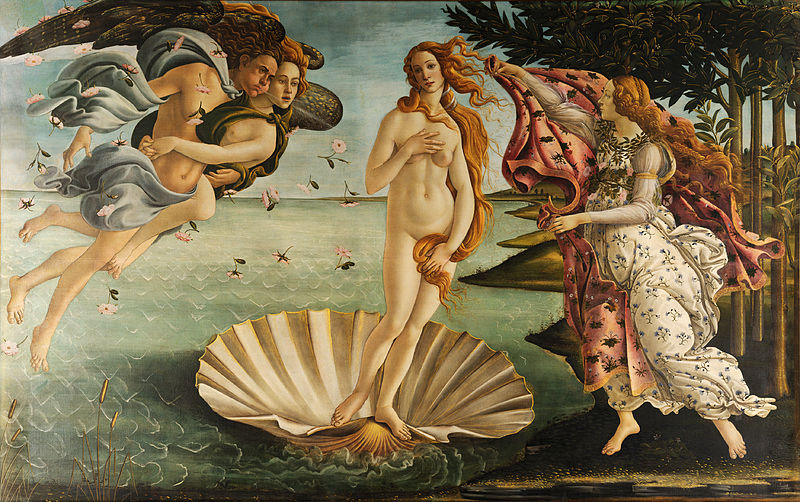RENAISSANCE ART
1400-1492
The human spirit breathes life into the flat shapes and forms of Byzantine and Medieval art. The addition of drama, pathos, and human emotions to works of art made the Renaissance among the most memorable moments in art history.
For one brief, shining century, civilization took a giant step forward and pulled the art world with it. Or perhaps it was the other way around. No matter, after the stilted spirituality of Medieval and Byzantine Art, the Renaissance put the human spirit back in spirituality. Influences from the art of ancient Greece and Rome improved form. Human subjects, as depicted in both sculpture and painting, took on a new fullness, as if the flat shapes of Medieval times were filled with the breath of God. For the first time, we could take works of art and reliably tie them to specific, and well-known, artists.
The Renaissance was a time when art merged with science, architecture, mathematics, the humanities, religion and every other part of Italian culture. It was a time when the human spirit, again, soared after a thousand years of Dark Ages. A time when artistic subject matter evolved beyond traditional religious stories and people began to move beyond the strict views of the church in order to understand the human condition.
Renaissance around the world
Different regions of the world experienced renaissance periods similar to the Italian and European Renaissance of the fifteenth century. Worldwide, these various renaissances were usually the result of a rediscovery of ties to an ancient civilization and a consequent surge of nationalistic fervor.
Egyptian Renaissance
This particular renaissance came about as the result of two scientific discoveries. The first was the ability of Jean-Francois Champollion to translate hieroglyphics, unlocking the secrets of thousands of scrolls and artifacts stored in museums around the world. This happened early in the nineteenth century, 1400 years after the world had lost the ability to read this ancient language. Many art historians mark the Egyptian Renaissance from 1801-1880 a period of time when Egyptologists began fervently translating hieroglyphic artifacts. However, a second discovery caused the artistic renaissance of ancient Egypt to fully bloom.
This later discovery was the unearthing of Tutankhamun’s Tomb in 1922. The overwhelming beauty and historic nature of the artifacts ed to renewed interest in Egyptology and nationalistic pride. For a period of time between World Wars Egyptian art and science flourished as a country gleefully explored their past glory.







